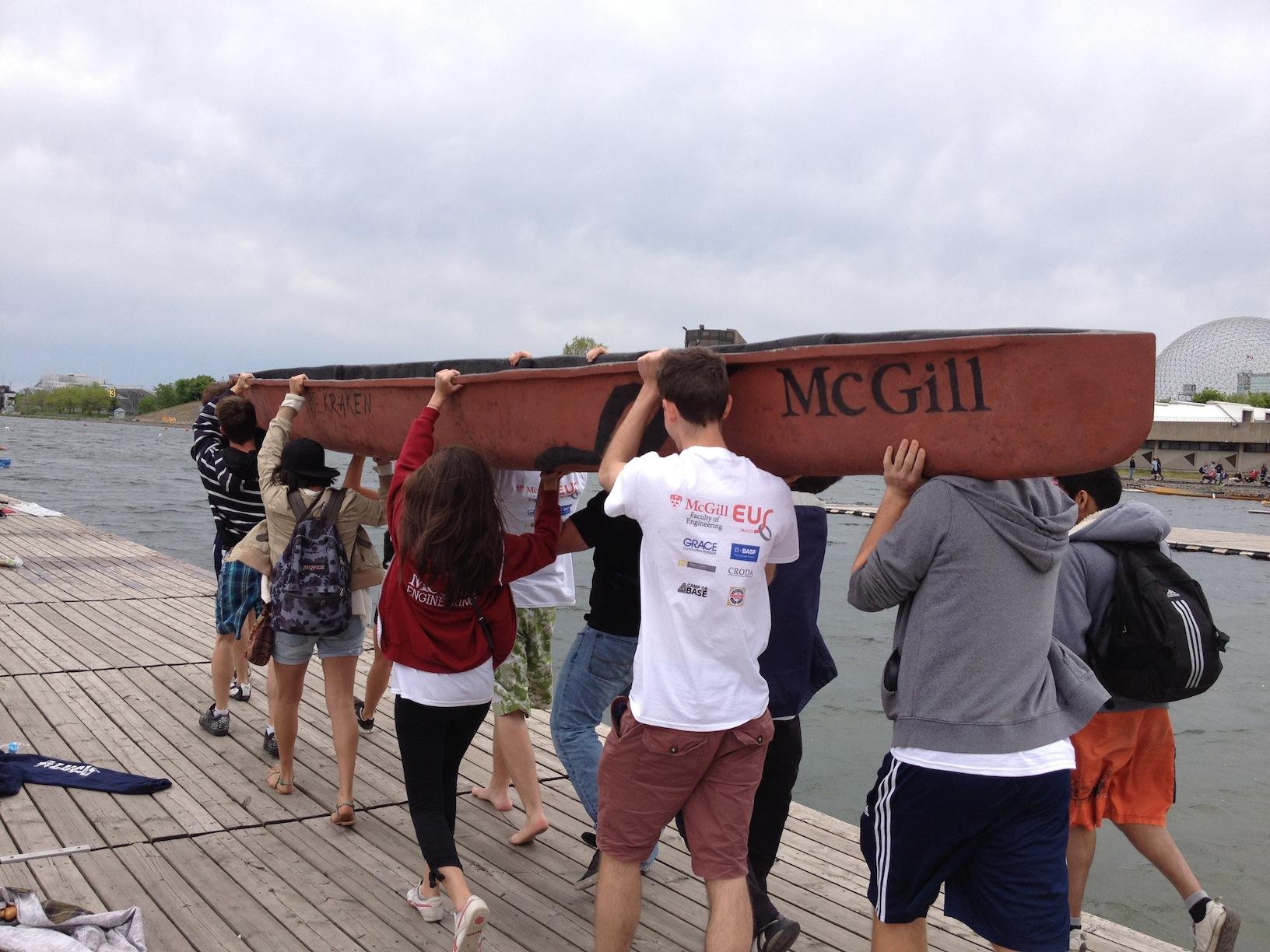The Kraken lurked next to the Engineering Café for the first few months of the school year, unbeknownst to most students. Created by McGill’s concrete canoe design team, the Kraken competed last May at the Canadian Concrete Canoe Competition (CNCCC). The competition started in 1995 and aims to allow university students to gain design experience in a non-academic environment.
According to Steven Cerri, co-captain of McGill’s concrete canoe team, over 200 teams and 3,000 students have competed since the start of the Canadian competition. “Every year, thousands of spectators come to watch as students demonstrate the research, design, testing, and leadership skills that they have gained from the building of their concrete canoes,” he said.
The team consists of 70 undergraduate students, most of whom study Civil Engineering, although there are also students present from other Engineering programs, as well as from the Faculties of Science and Education. The team is responsible for designing, building, and casting a canoe completely out of concrete that is buoyant. To succeed, students must create an effective concrete mix, design a canoe shape, and build a mould.
Cerri admits that he has often been asked why anyone would want to build a boat out of concrete. Heavy, brittle, and weak in tension—concrete is not a conventional boat-building material.
“So why do we do it?” Cerri said. “To use the world’s most common building material in an unconventional sense? Perhaps. For the design challenge? Maybe. The way I see it, the concrete canoe team is much more than these challenges, and [this is] more than simply building a boat. The team is a way for young engineers to tackle problems, be innovative, build friendships, and teach each other. These qualities will be indispensable once the students become practicing engineers
 The competition is divided into four events: the design paper, the oral presentations, the final product, and the races—each of which are worth equal points. Races consist of male and female endurance and sprint races, but they also include a final co-ed race.
The competition is divided into four events: the design paper, the oral presentations, the final product, and the races—each of which are worth equal points. Races consist of male and female endurance and sprint races, but they also include a final co-ed race.
Last year, the team competed for the first time since 2009. They look forward to competing again this spring with more experience under their belt—this time hoping to make the podium.
“The team is [currently] in the development and testing phase of the year,” Cerri said. “We are experimenting with new innovative materials in our mix design, and are making about 25 new mix designs a week.”
According to Cerri, the team is composed of six different sub-teams that focus on different tasks requiring different skill sets. These include the mixing, construction, aesthetics, design and analysis, and sponsorship and procurement groups.
In addition to working on creating a successful concrete mix, the construction team is in the process of building a quarter scale mould, which will allow the team to test and prove new design ideas before implementing them on the full-scale canoe.
“The design and structural analysis team has created over 25 prototype shapes for the canoe and now are developing a mathematical formula which rates the performance of a canoe based on certain geometric parameters of the boats shape,” Cerri added.
Cerri, and his co-captain Joseph Yazbeck decided to start up the team to fill a void in Civil Engineering at McGill.
“The other Engineering department had multiple design teams but nothing that involved Civil Engineering,” Cerri explained, “So it was an easy decision be a part of this new team that gives Civil Engineering an opportunity to have a design team oriented towards it. The concrete canoe team led the path, and now, there are three Civil Engineering oriented design teams including Concrete Canoe. But really, what could be cooler than a boat made of floating concrete?”
While many of the sub-teams are not accepting new members at this time of the year since they are too deep into their work, the construction and aesthetics team are still open to new members.
Students are encouraged to contact [email protected] for more information.









